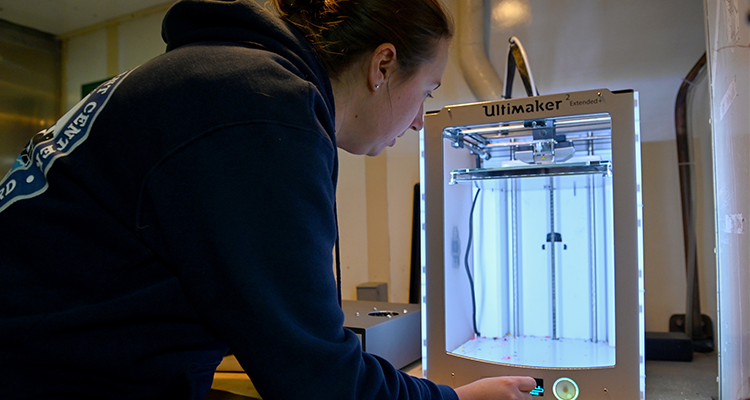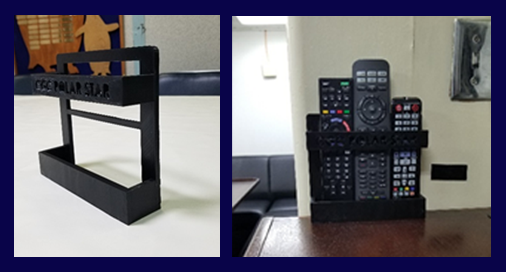Dec. 18, 2020 —

Shalane Regan, a mechanical engineer and researcher with the Coast Guard Research and Development Center, uses a 3-D printer while aboard Coast Guard Cutter Polar Star Dec. 14, 2020. Polar Star is underway for a months-long deployment in the Arctic. U.S. Coast Guard photo by Petty Officer 1st Class Cynthia Oldham.
The Coast Guard Research and Development Center (RDC) is part of a unique future-focused Arctic deployment of the nation’s only active heavy icebreaker, Coast Guard Cutter Polar Star.
When Polar Star’s annual resupply mission at McMurdo Station in Antarctica was cancelled because of COVID safety precautions at the station, Coast Guard leaders arranged a special winter Arctic deployment to project sovereign Arctic presence as well as train the next generation of icebreaker sailors. Polar Star has not been on a winter Arctic deployment since 1982.
Shalane Regan, a mechanical engineer and researcher with the RDC Surface Branch, is among the researchers and scientists aboard. She will observe and detail how the crew operates and responds to conditions above the Arctic Circle. “We feel tremendously fortunate that Shalane is onboard for this winter patrol,” said Brian Dolph, Surface Branch chief. “Past RDC research efforts have typically been conducted in summer/fall, but as operational deployment windows expand, understanding capability impacts year-round will become increasingly relevant.”
The RDC conducts research in the Arctic annually to determine how different technologies might help overcome the tremendous challenges – such as reduced communications and limited maritime domain awareness – that extreme conditions and remoteness of the area add to Coast Guard missions. Regan is trying to discover other challenges presented by an Arctic winter, so the RDC can work to mitigate them as well.

To help illustrate the value of 3-D printing capability on a remote deployment, Regan started by making simple items to improve habitability, such as this rack that prevents assorted remote controls from becoming airborne projectiles during rough seas. Regan was recently selected as co-chair of the Coast Guard Additive Manufacturing Working Group and looks forward to gaining shipboard hands-on experience during this deployment. U.S. Coast Guard photos by Shalane Regan.
Regan will evaluate potential use of remotely operated vehicles in the dynamic conditions found in the polar regions; other areas of concern are network bandwidth and how to improve communication/reachability of crewmembers within the large ship while it is underway. Regan is also providing training in 3-D printing; she has already created small habitability improvements such as a drip tray and cup and lid rack for the coffee station and television remote rack for the lounge. Additional research opportunities were in planning, but were canceled due to elevated concerns with COVID-related risks this year.

With Mount Baker in the background, Coast Guard Cutter Polar Star transits Puget Sound north of Seattle on Dec. 4, 2020. The nation’s only active heavy icebreaker is deploying on a rare wintertime mission to the Arctic Circle. U.S. Coast Guard photo by Petty Officer Steve Strohmaier.

Coast Guard Cutter Polar Star navigates heavy seas in the Gulf of Alaska Dec. 10, 2020. U.S. Coast Guard photo by Petty Officer First Class Cynthia Oldham.
For more information: Research, Development, Test and Evaluation program page and Research and Development Center page.